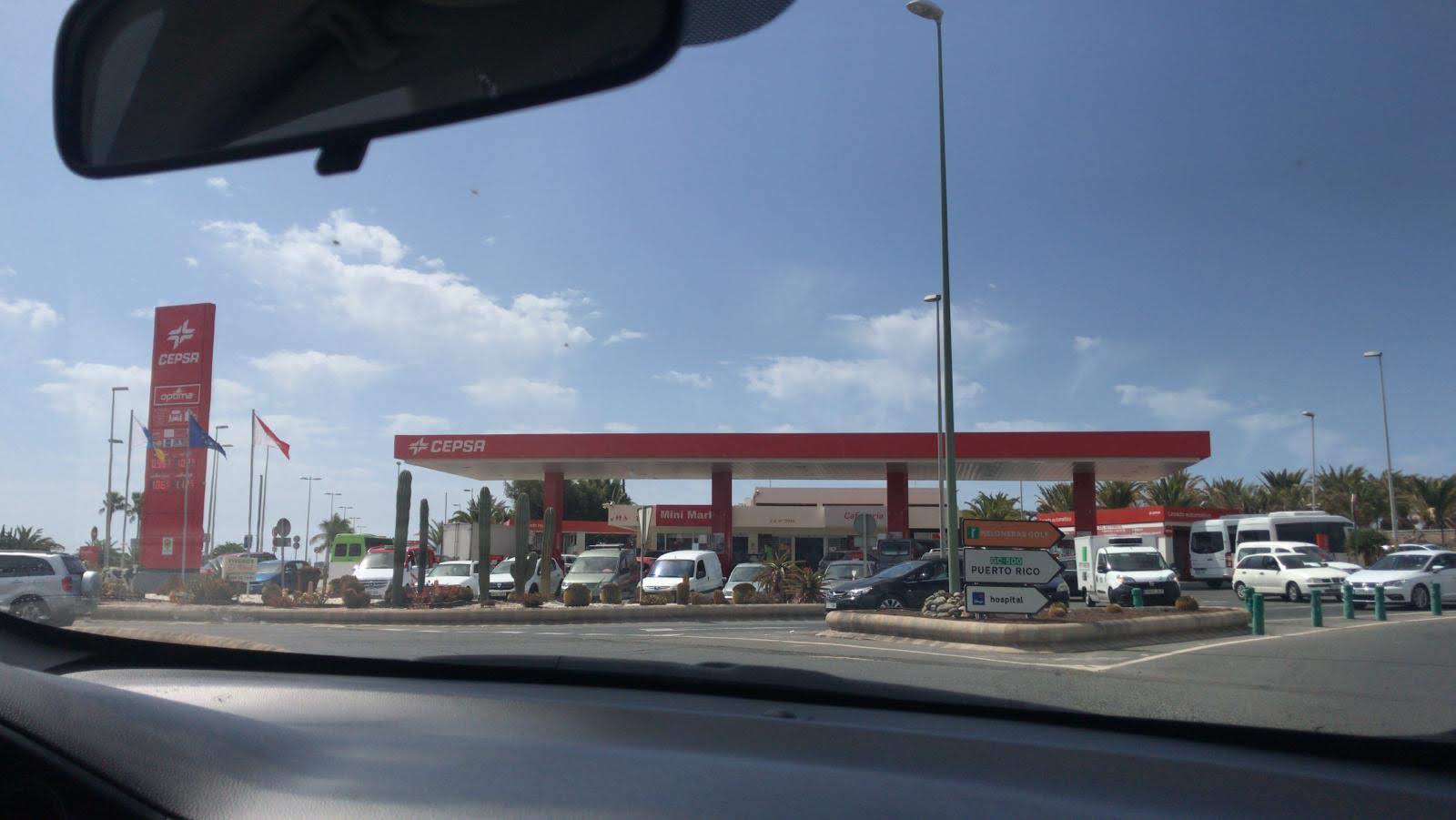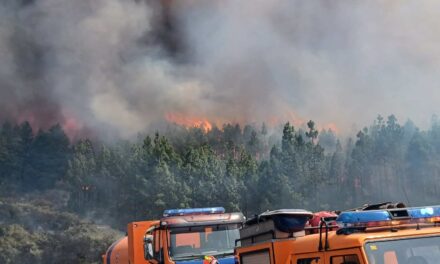Drivers have been up in arms for weeks, with transport workers on strike across mainland Spain, adding to fears of shortages here on the islands, where we import 80% of what we consume. Prices on the forecourts have continued to rise in the Canary Islands, despite the fact that the oil prices have been falling recently, having peaked at just over $130.2 a barrel on March 8 the price of Brent crude oil, the European benchmark, has been oscillating between $100 and $120 a barrel. Most transport workers have returned to work, following this week’s announcement of Government subsidies at the pumps.
Last Thursday a Brent barrel cost $118.20. According to official data from Spain’s Ministry for Ecological Transition, which directly influences the prices at service stations themselves, a litre of Unleaded 95 in the Canary Islands averaged €1,441; diesel, was at €1,421 leading the central Government in Madrid to announce, last Monday, a 20 cents per litre fuel subsidy for all drivers, from this Friday April 1, as part of a €16 billion package of measures dubbed the Shock War Response Plan. José Jorge Artiles, manager of the Las Palmas Federation of Service Stations, claims that the current record prices are a “coincidence” as prices change “almost three times a week”, but since Monday many of the islands’ service stations, according to Spanish language daily La Provincia, have increased their prices by more than five cents a litre for diesel and by three cents for a litre of Unleaded 95.
Service Station operator Cepsa have even said that a situation could foreseeably arise where they would need to ration fuel at the pumps.
Spain’s Prime Minister, Pedro Sánchez , announced a 20 cents per litre subsidy on Monday for all drivers, from Friday: 15 cents to come from the public coffers, and at least five cents per litre will have to be paid by the oil companies. Brent Crude closed that same day at $109.54 a barrel. A fall of more than 7% since Thursday last, yet forecourt prices have continued to rise, up to €1.45 euros, and diesel rose to €1.43.
Yesterday, Brent crude closed around $111 dollars a barrel, and opened this morning around $108 however the average price of fuel in the Canary Islands remains at record highs without dropping. But, writes Andrea Saavedra, not all service stations maintained their prices this week, some have increased the cost to the consumer on the forecourts.
“We have detected petrol stations that have taken advantage by raising prices by between five and fifteen cents ahead of the Government of Spain’s 20 cents reduction, in the aid plan, coming into force,” said Blas Acosta yesterday, Deputy Minister of Economy and Internationalisation of the Regional Government of the Canary Islands, in the presentation of the Monitoring Report on the economic impact of Covid-19 and the situation in Ukraine. Acosta says his department are already “studying” how to discover “who is cheating.”
“I don’t know to what extent we have the capacity to act, but we appeal to their conscience or their shame,” he declared.
For his part, the manager of the Las Palmas Federation of Service Stations insisted yesterday that the rise is still linked to the conflict in Eastern Europe. “We are in a period of rapid price changes, and gas stations can say little,” he said defending those services trying to insulate themselves from the wild fluctuations in prices.
The Organisation of Petroleum Exporting Countries (OPEC) are scheduled for a meeting today to review crude oil pumping plans. OPEC appears determined to reaffirm their alliance with Moscow, offering no sign of giving-in to pressure to increase production and help ease tensions in the energy markets over the war in Ukraine. The OPEC ministerial teleconference of ten independent nations, including Russia, will determine what the group’s production capacity will be in May. During their last meeting, on March 2, the OPEC+ alliance, as they are known, simply ignored demands for a substantial increase in supplies, limiting themselves to confirming a modest increase of 400,000 barrels per day (bd) that had already been planned for April.
That is insufficient, according to the International Energy Agency (IEA), which warns of the risk of “the biggest (oil) supply crisis in decades” this April. The IEA estimates that three million barrels of crude oil, out of the eight million barrels a day that Russia had been exporting, will have disappeared from the market by then, due to the impact of financial sanctions on its oil industry.
With luck the latest raft of measures will at least temper the price fluctuations, and we may even see some relief in the prices on the forecourts next week…
Despite the best efforts of European economies, Central Government and the Regional Administrations, the news is pretty grim. Oil prices have more than doubled in the last five years, the pandemic weakened most economies, and the outrageous aggression in Ukraine has exasperated already soaring food and energy prices, to create a perfect storm.
There is no escaping the fact that shortages could be on the horizon unless something changes quickly, and we can be certain to be feeling the effects for several years to come. It is now more important than ever that each of us shows real awareness of our material needs and our use of resources, from the food we eat, to the transport we use, now is the time to brace for potential problems moving forward, if you weren’t already tightly braced going into 2022, you will need to be to get through it relatively unscathed.
We should be able to expect further drops in prices over coming days, as this US have announced they are considering the release of up to 180 million barrels from from their Strategic Petroleum Reserve, the largest in the near 50-year history of the SPR.
However the longer the Ukraine conflict continues, the harder it will get to mitigate soaring prices on everything.
Bus, cycle or walk, each of us may need to reconsider how we travel day to day for a while.










